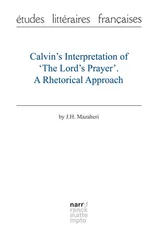Helge Fauskanger - J.R.R. Tolkien’s Lord’s prayer and Hail Mary in Quenya - Syntactical and Etymological Analysis
Здесь есть возможность читать онлайн «Helge Fauskanger - J.R.R. Tolkien’s Lord’s prayer and Hail Mary in Quenya - Syntactical and Etymological Analysis» весь текст электронной книги совершенно бесплатно (целиком полную версию без сокращений). В некоторых случаях можно слушать аудио, скачать через торрент в формате fb2 и присутствует краткое содержание. Жанр: Языкознание, на английском языке. Описание произведения, (предисловие) а так же отзывы посетителей доступны на портале библиотеки ЛибКат.
- Название:J.R.R. Tolkien’s Lord’s prayer and Hail Mary in Quenya: Syntactical and Etymological Analysis
- Автор:
- Жанр:
- Год:неизвестен
- ISBN:нет данных
- Рейтинг книги:5 / 5. Голосов: 1
-
Избранное:Добавить в избранное
- Отзывы:
-
Ваша оценка:
- 100
- 1
- 2
- 3
- 4
- 5
J.R.R. Tolkien’s Lord’s prayer and Hail Mary in Quenya: Syntactical and Etymological Analysis: краткое содержание, описание и аннотация
Предлагаем к чтению аннотацию, описание, краткое содержание или предисловие (зависит от того, что написал сам автор книги «J.R.R. Tolkien’s Lord’s prayer and Hail Mary in Quenya: Syntactical and Etymological Analysis»). Если вы не нашли необходимую информацию о книге — напишите в комментариях, мы постараемся отыскать её.
J.R.R. Tolkien’s Lord’s prayer and Hail Mary in Quenya: Syntactical and Etymological Analysis — читать онлайн бесплатно полную книгу (весь текст) целиком
Ниже представлен текст книги, разбитый по страницам. Система сохранения места последней прочитанной страницы, позволяет с удобством читать онлайн бесплатно книгу «J.R.R. Tolkien’s Lord’s prayer and Hail Mary in Quenya: Syntactical and Etymological Analysis», без необходимости каждый раз заново искать на чём Вы остановились. Поставьте закладку, и сможете в любой момент перейти на страницу, на которой закончили чтение.
Интервал:
Закладка:
aistana, past participle blessed , indicating a verbal stem # aista- bless . The ending - naforming past participles is well attested. Compare for instance the verb car- ( kar-) make quoted in the Etymologies (LR:362 s.v. kar-, there in the first person aorist: karin) with its past participle # carna made , attested as part of a compound in MR:408. This ending descends from primitive - nâ: compare such a primitive "past participle" as skalnâ(> Quenya halda) hidden vs. the stem skal 1- hide , LR:386. However, in Quenya the past participle ending also appears in a longer form - ina. Examples like hastaina marred (MR:254) would seem to suggest that this longer form would be used in the case of a verb in - ta. Perhaps the past participle of # aista- bless appears as aistanarather than ** aistainabecause of euphony, the diphthong aiin two concomitant syllables being disliked. – The verb # aista- bless is not previously attested. It is obviously not to be equated with aista to dread in the Etymologies (LR:358 s.v. gáyas- fear ), though in both cases we are probably to assume a primitive form * gaistâ-. The verb aista- would then include the same stem as in (* gaisi>) aire holy discussed above, though subsequent sound-changes have made the words somewhat divergent in form: intervocalic sis voiced to zand then becomes rin Noldorin Quenya, but in front of an unvoiced plosive like t, an sremains unchanged (with * gaistâ- > Q aista- but * gaisi> Q airecompare primitive bestâ matrimony > Q vestabut primitive besû married pair > Q veru, LR:352 s.v. bes-, the latter form arising via * vezu). As indicated in the discussion of aireabove, the original meaning of the relevant stem has to do with fear and dread rather than holiness: what is "holy" is in origin perceived as that which is fearful or awe-inspiring. It may be that in a way, the verb aista to dread in the Etymologies is indeed the same as its homonym bless in the text before us: Tolkien simply reinterpreted the semantic development (or rather re-coined an earlier word from much the same elements as before, but then applied them with somewhat different shades of meaning). In aista- to dread , clearly meant to come from * gaistâ-, the verbal ending - tâ> - taadds little to the meaning of the stem gáyas- fear (if we take this gloss as a verb rather than a noun). Compare a Quenya verb like onta- beget , derived from a stem ono- of exactly the same meaning (LR:379; see ontaril). Yet this ending often has a stronger meaning than simply signaling that "this is a verb". It can be causative (see under tulyaregarding primitive tultâ-), but also declarative : Interestingly, this meaning is apparently prominent in another attested word for bless , namely laita(the cry a laita, laita tein the Cormallen Praise and SD:47 meaning bless them, bless them , Letters:308). The verb laita- would most likely be derived from a stem that must be either lay- or day- (since initial primitive d- normally becomes l- in Quenya). We know a base lay- that underlies words for green or summer (Letters:283, cf. QL:52 s.v. laya), but this seems a less than ideal candidate as the stem for a verb bless ; on the other hand, it seems clear that Tolkien in the post- Etymologies period reckoned with a stem *day- having to do with greatness (of course unconnected with day- shadow in LR:354): Sindarin daermeans great (as in Lond Daer Great Harbour , PM:329, and Athrad Daer/ Dhaer Great Ford , WJ:335/338), and this adjective is probably meant to represent primitive * dairâ(with the same adjectival ending as in such primitive forms as gairâ, ubrâ, gaisrâ: see under aireabove). Likely, Quenya laita- bless is to be referred to a primitive word * daitâ-, sc. the same stem *day- great with the verbal ending - tâ, that would here be declarative : * Daitâ- would mean magnify , that can of course mean to literally make big or great, but also praise by declaring great : When Frodo and Sam were hailed with the cry laita te, bless them , the onlookers would literally be encouraging one another to magnify them in the sense of declaring their greatness . In the case of the word # aista- in the text before us, that may also be translated bless , this semantic idea is however derived from another source – but the ending seems to have the same shade of meaning. In the case of * gaistâ-, Tolkien evidently imagined that the ending - tâis again declarative, and since the stem gay(a)- or gáyas- has to do with fear and dread, the basic meaning would be to declare or recognize the fearfulness (awe-inspiring quality > holiness) of another: Aistana elye blessed (= recognized and declared as holy) art thou . Contrast the earlier interpretation of * gaistâin the Etymologies , where the same suffix - tâwas simply used as a verb-former with little independent meaning and the descendant Quenya verb aista to dread differed only slightly in meaning from the stem gáyas- fear itself.
# ála don’t , only attested with a pronominal suffix - me us , in the phrase álame tulya don’t-us lead , that is, do not lead us (into temptation). See áme, ámenconcerning the pronominal ending - me. The first element of # álais the imperative particle á, q.v. The second element is the negation not , clearly identical to the stem la- no , not (LR:367). Another word for don’t , namely áva, appears in a later source. This word as well incorporates the imperative particle á, in this case combined with the negation vá, "an exclamation or particle expressing the will or wish of the speaker", to be interpreted I will not or Do not! depending on the context (WJ:371). LR:367 s.v. la- lists láas the Quenya negation no , not , so # álacould be seen as á+ lájust like ávais á+ vá(in polysyllabic words, Quenya cannot normally have a long vowel in the final syllable, hence it is shortened: ** álá> # álaand ** ává> áva). As for the variation # álain the Pater Noster vs. ávain Tolkien’s later essay Quendi and Eldar , this is explained by Bill Welden’s article Negation in Quenya (VT42:32-34): "Possibly soon after publication of The Lord of the Rings ," Tolkien decided to drop the negative element al/ la"not" (= the - laof ála). Among the new negations replacing it we find bâas an element having to do with "negative command"; this is the source of - vain áva. For a while, # álaas a negative command don’t! was thus a conceptually obsolete form, but since Welden also notes that Tolkien eventually resurrected the negative element ala, Quenya lexicographers may treat # álaas a valid word and a synonym of áva.
Читать дальшеИнтервал:
Закладка:
Похожие книги на «J.R.R. Tolkien’s Lord’s prayer and Hail Mary in Quenya: Syntactical and Etymological Analysis»
Представляем Вашему вниманию похожие книги на «J.R.R. Tolkien’s Lord’s prayer and Hail Mary in Quenya: Syntactical and Etymological Analysis» списком для выбора. Мы отобрали схожую по названию и смыслу литературу в надежде предоставить читателям больше вариантов отыскать новые, интересные, ещё непрочитанные произведения.
Обсуждение, отзывы о книге «J.R.R. Tolkien’s Lord’s prayer and Hail Mary in Quenya: Syntactical and Etymological Analysis» и просто собственные мнения читателей. Оставьте ваши комментарии, напишите, что Вы думаете о произведении, его смысле или главных героях. Укажите что конкретно понравилось, а что нет, и почему Вы так считаете.












